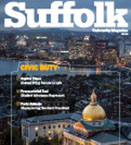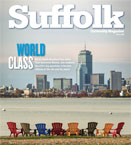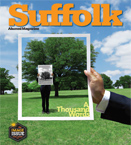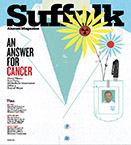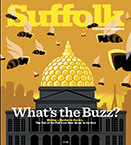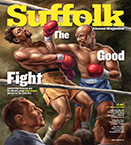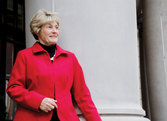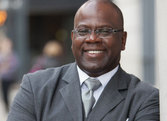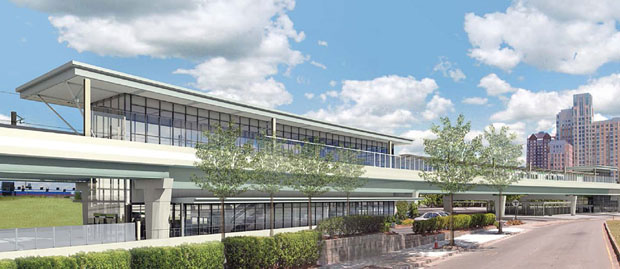
Designed to a T
Public art by NESAD professor Randal Thurston on track for new MBTA station
When Randal Thurston, a NESAD associate professor of art and program director for its fine arts department, submitted his work to the Massachusetts Bay Transit Authority for consideration for its Green Line Extension Integrated Art Program, his accompanying essay cited the ability of artwork, like the train itself, to tie communities together. His concept worked: out of more than 80 applicants, Thurston was one of three artists chosen to create public art for one of the T’s new stations.
“I wanted to be connected to this project because I live at Brickbottom Studios [in Somerville, Massachusetts]. In the extension, the T is going out ultimately to Tufts [University], but a branch of it will go off to Union Square, and I live at the apex of that,” says Thurston, who will create art for the relocated Lechmere station in East Cambridge. “I have a real sense of how, when a train moves through Somerville, it’s moving through a whole succession of communities, and how important it is to try to tie them together. Working on artwork for the T would be a great way to do that.”
Thurston must submit his final designs to the project’s architectural firm in January. The station will be completed in 2017.
Much of Thurston’s work involves nature, and he will combine that theme along with one of migration for his Lechmere project. Calling his piece “organic and flowing,” he’ll use a process where ceramic ink called frit is printed and embedded inside the glass in the station. “I was thinking about how nature migrates, and how the riders on the T will be doing the same thing, moving back and forth through the station,” he says. “I also think, with the station I’ll be working on, which is light-filled and has a lot of glass, there will be an opportunity to talk about nature in a very urban setting.”
“There’s a phenomenal amount of natural flora and fauna at that site, but you never think about it,” Thurston continues. “This is a way to connect riders and viewers with their natural environment, and I think there are ways of doing that that are attractive and beautiful, but at the same time, there’s content and you’re telling a story.”
